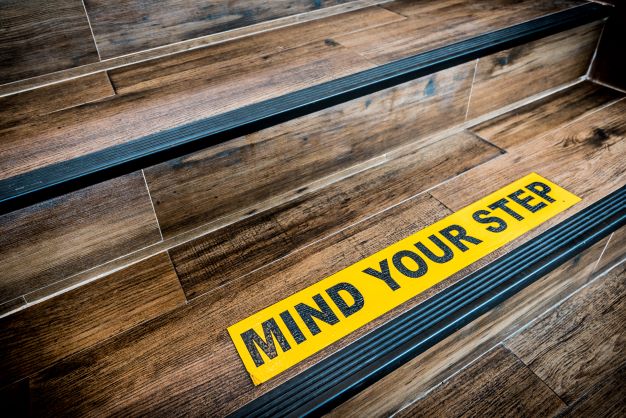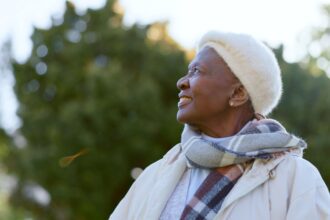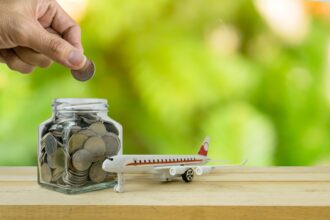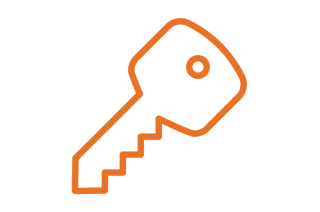Anyone can have a fall, however for people aged 65 years and over, a fall can be a major health concern. Falls are the leading cause of unintentional injury in older Australians. Nearly 1 in 3 older Australians have experienced a fall in the past 12 months. Of these, 1 in 5 required hospitalisation.
Even when a fall doesn’t cause an injury, it can result in a loss of confidence and an ongoing fear of falling. This, over time, can lead to a person restricting their movements and activity, which in turn increases the risk of future falls.
For older adults, fall prevention means injury prevention. Most falls, can be prevented and a person’s risk of injury reduced. There are many practical and simple ways to reduce the risk of falls occurring. Here are 10 tips on preventing falls around the home:
Clean up clutter. Keep your home neat and tidy and remove all clutter. Make sure walkways, staircases and hallways are kept clear and well lit. Don’t leave books, papers, clothes, and shoes on the floor or stairs.
Good lighting. Inadequate lighting is another major hazard. Create a home that’s easier to navigate by installing brighter light bulbs where needed, turn lights on when you walk around, add plug-in night-lights and have movement-sensitive lights in bedrooms and bathrooms for better guidance at night or leave hallway lights on at night. You can reduce glare inside your house by using net curtains or blinds on your windows. These changes make it easy for your eyes to see where you are going and reduce the chances of a fall.
Remove tripping hazards. Sometimes home fixtures can contribute to falls. Examine every room around the house for hazards. Keep walkways clear of clutter. Tape down any electrical cords along skirting boards. Mark any small changes in floor level with contrasting colour tape so they are clearly seen. Install draught stoppers on the bottom of doors instead of loose draft stoppers. Get rid of old mats and repair or replace carpets with worn areas, holes or long threads. Check that mats and rugs are secure and have no tears or wrinkles and put adhesive strips underneath them, including those in the bathroom. Ensure that chairs and beds are sturdy and easy to get in and out of, and that tables and benches do not have sharp corners. Arrange your furniture (such as low coffee tables) and other objects so they are not in your way when you walk. Always wipe up spills immediately.
Install handrails. If your mobility is limited, handrails and grab bars can be very helpful. Install them near toilets, on both the inside, and outside of your bathtub and shower. Have handrails on both sides of the stairs and hallway (if necessary). Always hold the handrails when you use the stairs. If you must carry something while on the stairs, hold it in one hand and use the handrail with the other. Don’t let what you’re carrying block your view of the steps.
Go nonslip. Slick flooring, such as tiles and floorboards, and wet areas in the home, such as bathrooms and laundries and kitchen floors, can become extremely dangerous when wet. To prevent falls in these areas and surfaces use nonslip mats or material, carpets or non-slip treatments.
Care with loose clothing. Loose clothing can sometimes increase the risk of tripping. Avoid wearing clothing that is too long, too baggy, oversized or touching the floor – for example, a dressing gown. Choose well-fitting and properly hemmed clothing that doesn’t bunch up or drag on the ground.
Wear shoes. Socks or loose slippers may be comfortable, but they create a slipping risk. Helping prevent falls around the home can be as simple as wearing shoes. Wear shoes that are comfortable and fit well, with a wide enough toe area, low or no heel and have slip-resistant soles. You can also buy nonslip socks that have grips on the sole, if shoes are too uncomfortable.
Easy access. Keep items you use often within easy reach. Whether that be next to your bed at night, such as a torch (in case the power goes out), or phone, or nearby when you are in a place you spend a lot of time, such as an armchair or outside chair. If necessary, get power points (for night-lights) and light switches moved closer to your bed and common areas.
Move carefully. Many people fall at home due to moving too quickly from a sitting to a standing position and vice versa. To prevent falls take your time, take a moment between lying down to sitting and sitting to standing. If you have pets, also be conscious of their presence and move carefully around your home, as they can get under your feet and create a risk.
Medical alarm. If you are concerned about falling, consider a personal medical alarm. If you fall or need emergency help, you push a button or they have built in fall detectors so automatically contact emergency. All on a special necklace, bracelet or watch. There is a fee for this service, but there are many options available and may be the peace of mind you need.
If you need further assistance, you can get an expert to visit your home, such as an occupational therapist, physical therapist, or nurse to assess your home’s safety and advise you about making changes to prevent falls. Also, remember to ask your loved ones to help identify hazards, tidy up clutter or install safety equipment. A handyman may also be a good option for safety equipment installations.
Next month we will bring you some fall prevention tips in relation to your personal health and well-being.
Source:
www.nia.nih.gov/health/fall-proofing-your-home
www.betterhealth.vic.gov.au/health/healthyliving/falls-prevention-at-home
www.everydayhealth.com/longevity/future-planning/prevent-falls-at-home.aspx












